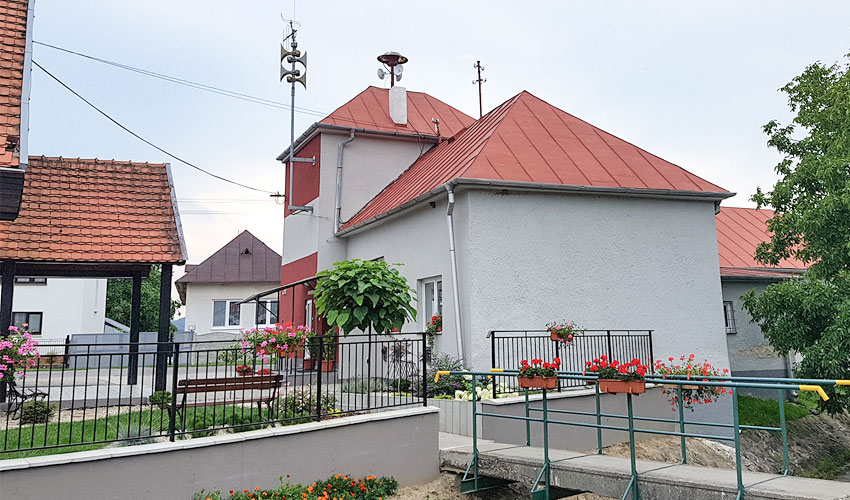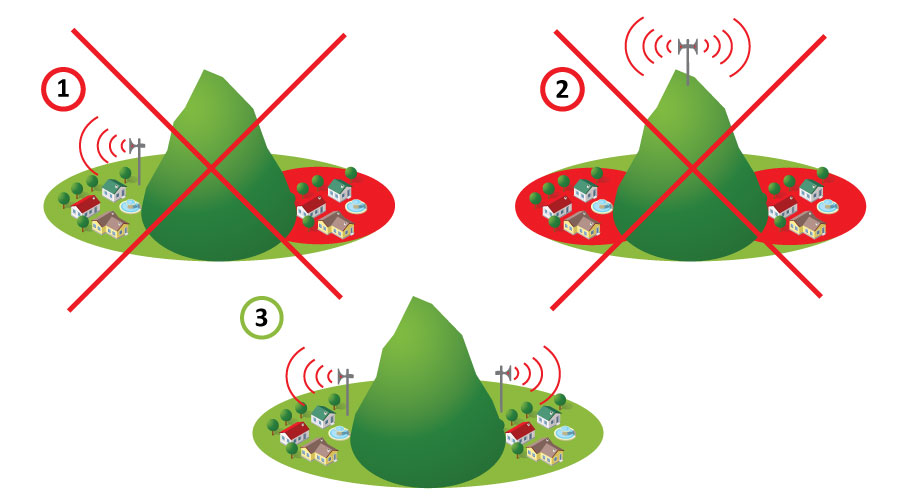
How to Choose the Right Place for a Siren
Sirens are designed to alert the population in case of an upcoming danger. Their primary function is to distribute alert signals that can be complemented by a voice message as a need may be. Therefore, it is essential to place them to a spot well audible to as many people as possible.
What are the three key points we should consider when choosing the right place for a siren?
1. Height
The most common question is how high a siren’s horns should be positioned.
It is necessary that the sound be well distributed and, at the same time, that it does not impair the hearing of the people standing near the siren. Therefore, it should be placed to a height where there are no obstacles to sound transmission.
In villages, for example, sirens are installed on municipal buildings and street lamp posts above the level of buildings and trees. In towns and cities, horns with their bearing structures are most frequently situated on roofs of multi-storey buildings so that nothing prevents the distribution of an acoustic warning signal.

2. Directing
An omnidirectional siren, which ensures sound transmission to all directions evenly (360°), is not appropriate for every endangered area. For sirens to be placed correctly and directed accordingly, a population density and degree of endangerment need to be taken into account.
By the proper horns arrangement, it is possible to target a sound in particular directions. For example, in river valleys, the bidirectional horn arrangement is the most commonly used solution as it is crucial for a warning signal to be distributed along a river.

Similarly, it is possible to ensure that sound is transmitted primarily in one direction. This solution is commonly used in the industrial sector and mountainous areas.

3. Terrain
Last but not least, a critical criterion for the accurate placement of sirens is terrain. It is necessary to take into consideration the specifics of the terrain that could prevent the propagation of acoustic waves.
If a siren is placed at the foot of a hill or on one of its sides, the acoustic pressure does not reach beyond the hill. In this case, the hill acts as a barrier to sound propagation. Similarly, if a siren is positioned at the top of a hill, the sound will not be adequately heard, even in populated valleys, so it is always better to install the siren directly where the inhabitants live.
Need more information? Feel free to contact us.


The article was written by
Petra Rychtarcikova
Petra is an international business manager in charge of Spanish, French and Portuguese-speaking countries. Petra, with her global, economic and logistic background and knowledge of four languages, does very productive and responsible work for Telegrafia. Latin-American affairs, travelling, tourism and electronic sirens are her hobby, and she is pleased to bring you exciting information from the Telegrafia world.
